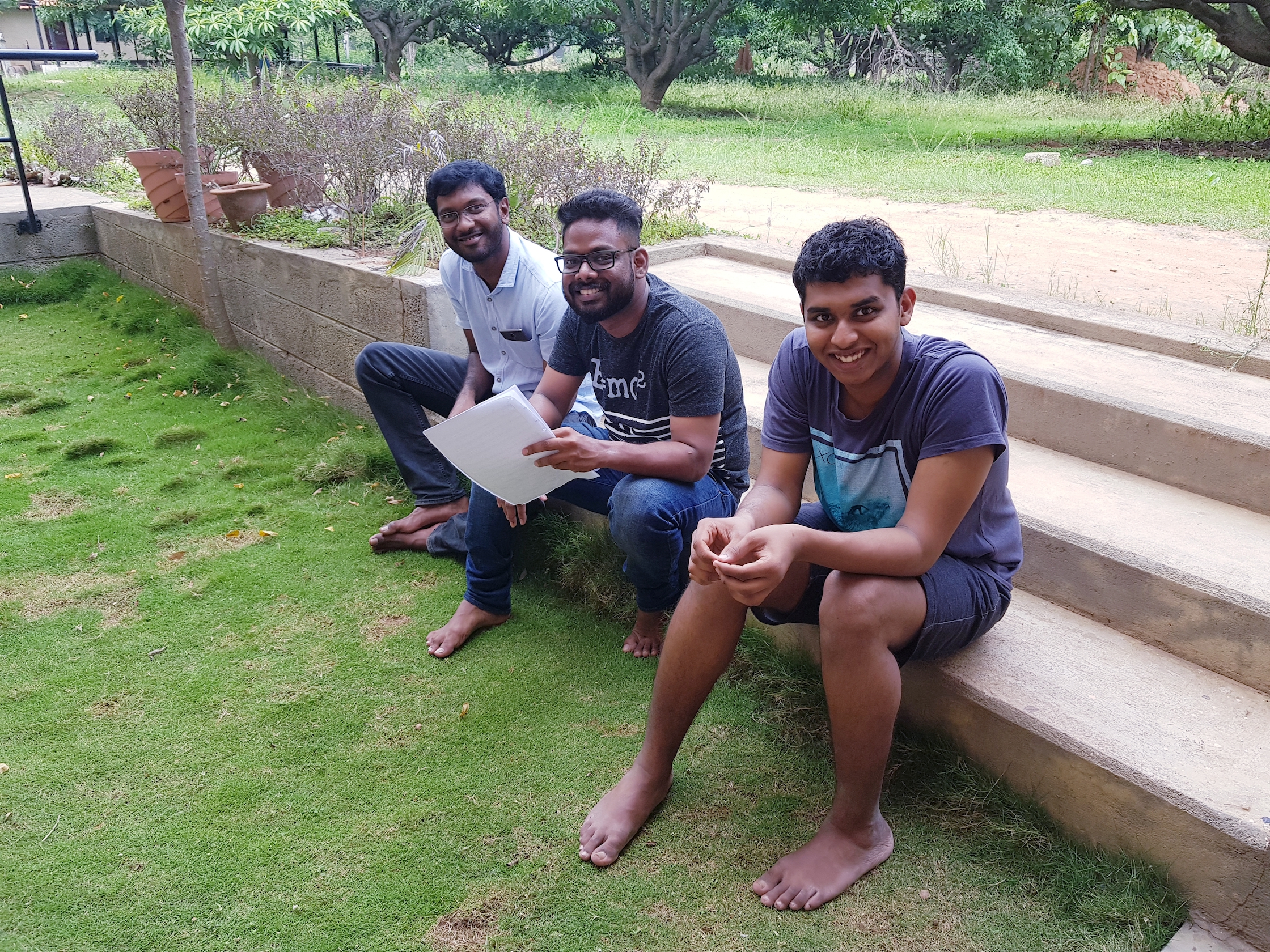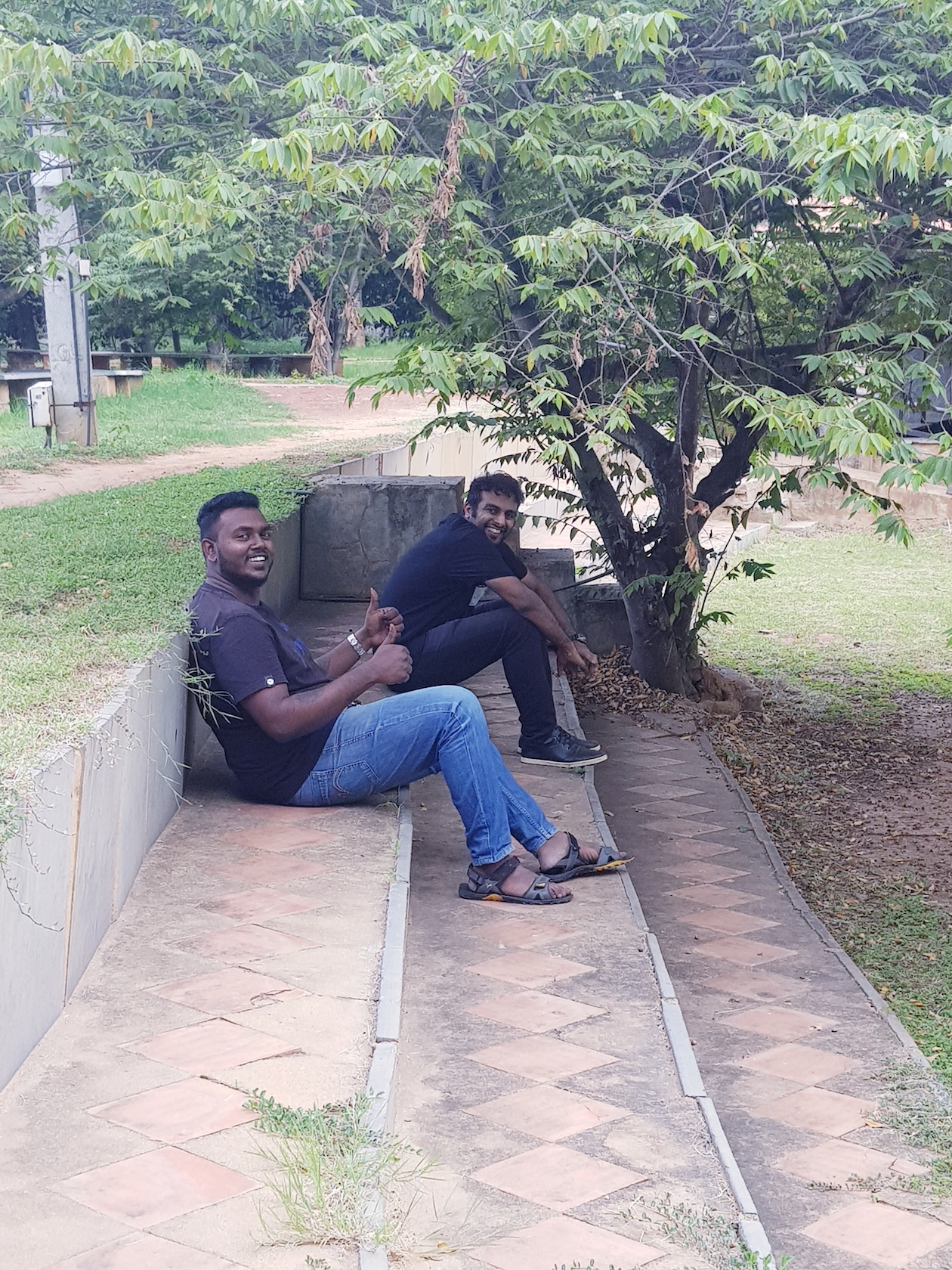Recording with The Men

During all my years as a choir singer (celebrating 31 years of singing this year), making recordings have always come with mixed feelings. On one hand, you feel proud and happy to be able to document and spread your music and your choir, on the other hand, you dread the long days, the many re-takes due to a cough, a misplaced consonant or passing bike. When I decided to make a recording with The Bangalore Men, it was the same feelings! These are some of our reflections from the recording weekend of 24-26th August 2018.
Challenge One – The repertoire
Choosing your repertoire wisely for the recording, is a crucial thing. You do not want the music to be too new or recently performed by the choir, in order to avoid mistakes and re-takes. The repertoire on the other hand should reflect the capacity of your choir, and be multi-faceted with rich variation in style, era etc. Since the inception of The Bangalore Men in January 2016, we have done over 30 major performances, with a vast variation of repertoire – from medieval chants to Gustav Holst, with stop-overs in baroque, Mozart Requiem, Beethoven Ode an die Freude and Franz Schubert. For obvious reasons, the pieces requiring female voices and/or an orchestra, were not on the charts for being part of the recording. We wanted to keep the scale simple – with the main instrument being the choir, accompanied on some pieces by piano or cello. Therefore, the decision was made to make a recording programme consisting of highlights from three of our major concert series – Cathedral Windows, Simply Schubert and Choral Hymns from the Rig Veda. All in all, 21 pieces were selected – ranging from the 16th to 20th century. As our collaborative pianist for the Choral Hymns, we were lucky to yet again be able to work with Shantanu Patel, and accompanying on the cello in Mendelssohn’s Adspice Domine was The Men’s own Bearded Cellist – Anup Abraham Thomas.

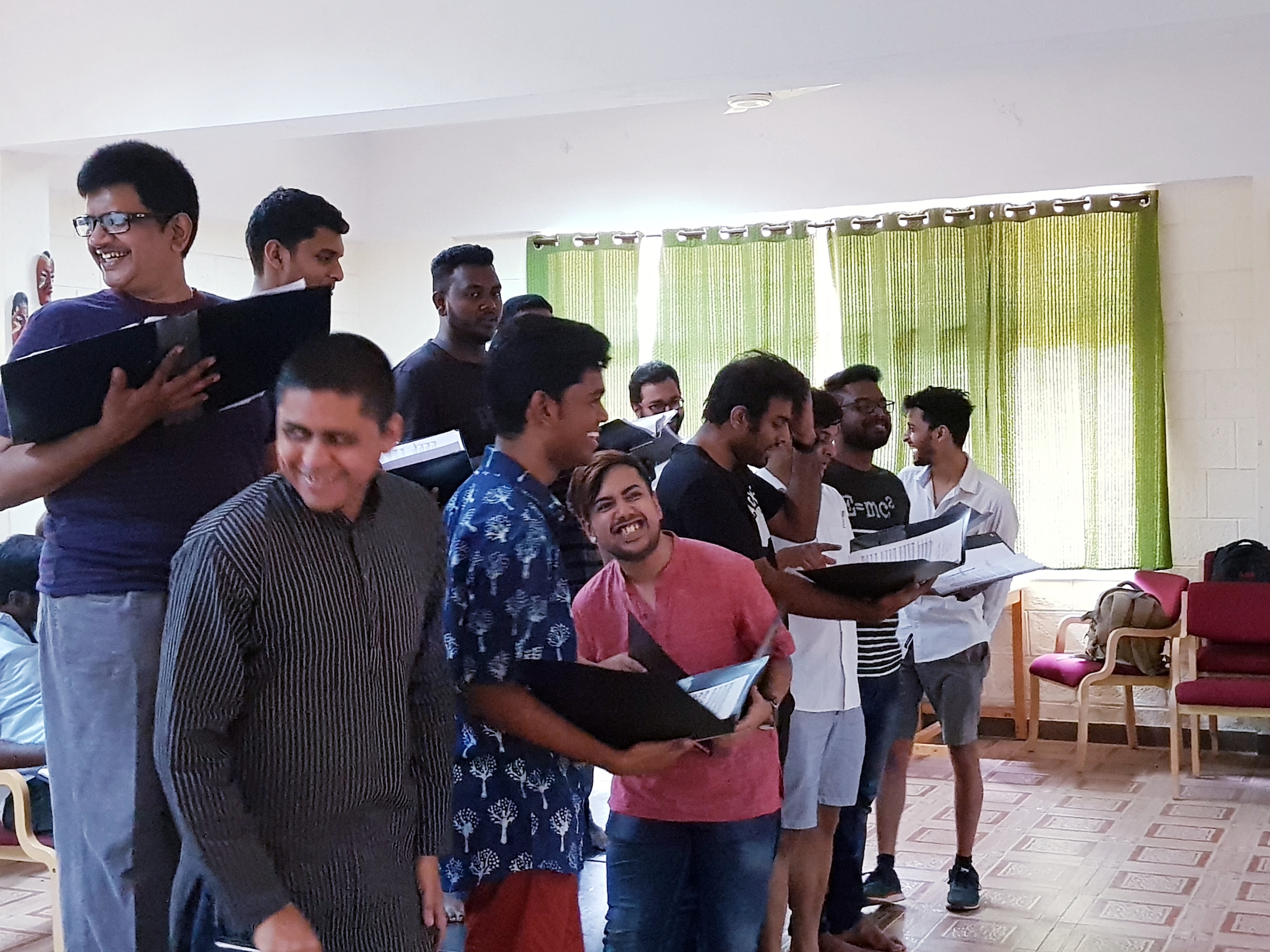
Challenge Two – The collaborations
The second thing to manage was the collaborations. As mentioned above, we wanted to record primarily a cappella music, with instrumental accompaniment in only a few cases. This means of course, that we would like to be able to work with a sound engineer, who is well-versed with Western classical music, and who understands the quite big differences in recording such music, compared to say pop or rock music. Our way of singing, which is done in an non-amplified way, supported only by the natural acoustics of the venue we perform at – also means that the recording and post-production have to managed in a different way. Therefore, we were very lucky to be able to collaborate with two of Bangalore’s most eminent sound engineers – Mark Reddy and Glen Ebenezer (Ebenezer Recording House).
During our recording weekend, Mark was able to, through subtle adjustments of microphones and useful feedback on our sound projection, keep us on track and really make sure that we were able to navigate smoothly through the different takes. With a team like this by our side, we are confident the end product will really be of high quality!
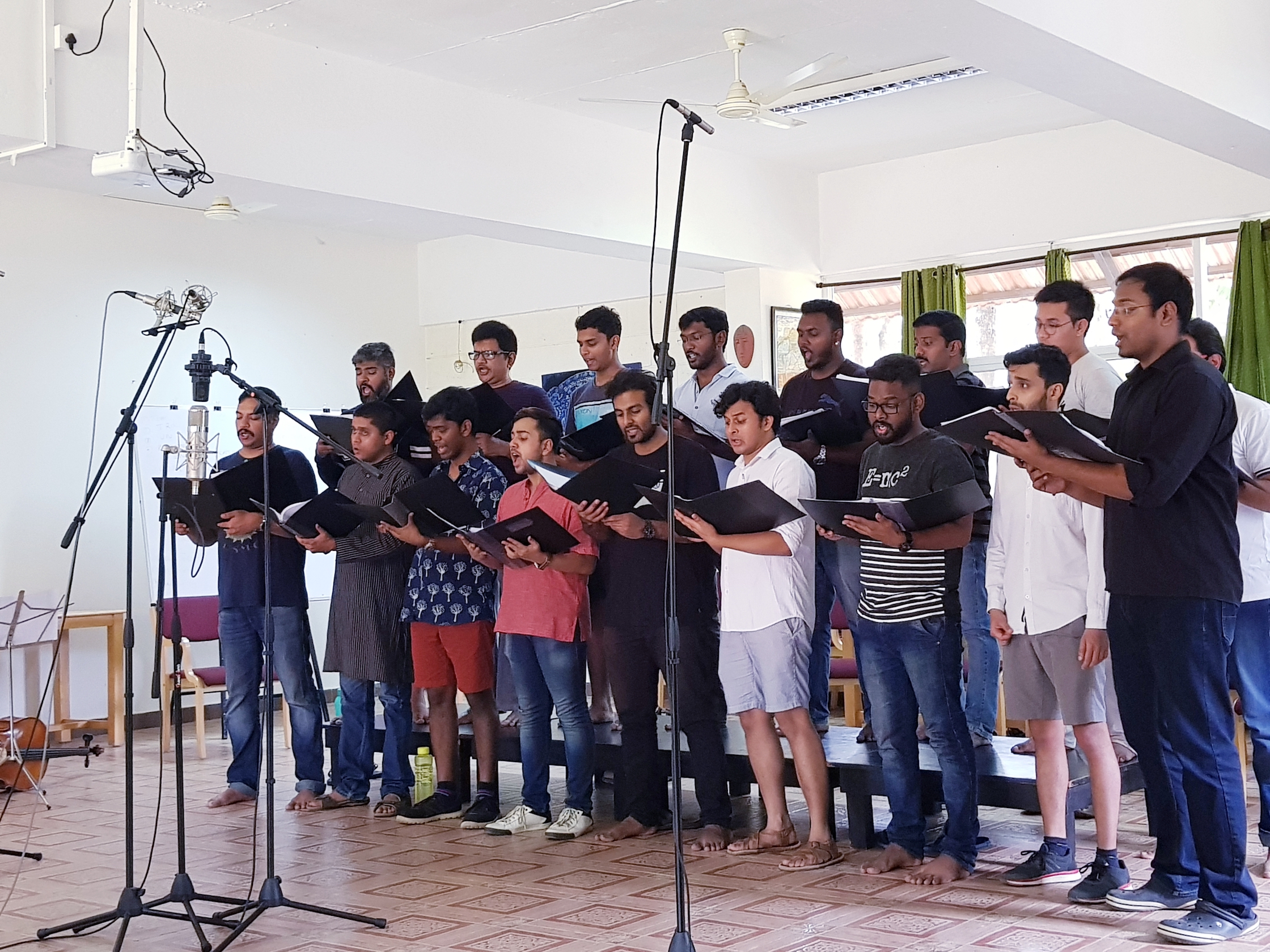
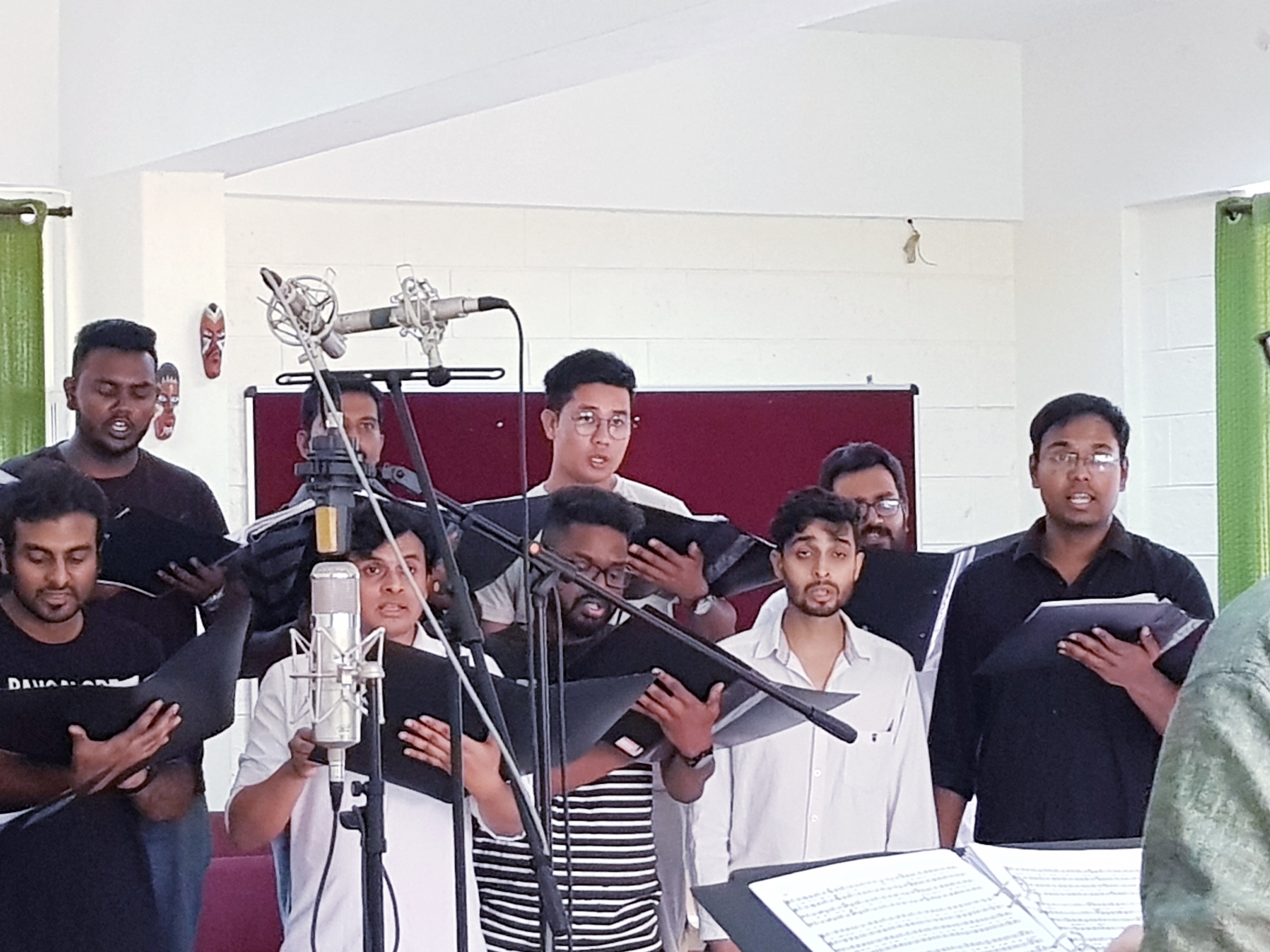
Challenge Three – The venue
Where does one record Western classical choir music? For many, the obvious reply would be – in a studio. Not necessarily so! Any choir singer, or Western classical singer for that matter, knows that what really makes our art form special, is the fact that we amplify our sound through our instrument – i e our body, and not through external amplification such as microphones. This of course also means, that a choir as instrument is far more dependent on the natural acoustics and reverb of the room, in order to sound at its best. A studio, with its dry and dampened acoustics, simply isn’t the right sound environment for our kind of instrument.
Therefore the challenge – where to find a suitable venue, in Bangalore, fulfilling the requirements on acoustics but also being in surroundings silent enough to function as a recording space? We were very happy to discover the Visthar Retreat, on the outskirts of the main city, where the only occasional disturbance were evening crickets and rain drops. Thanks to a very supportive and cooperative management of the retreat, we were able to use one of the halls, with a natural reverb, for our recording camp of three days.
Challenge Four – The recording days
And finally it was time! A detailed recording schedule done, microphones and choir risers in place, windows closed, digital piano ready, warm-ups done – and the first song (Holst – Hymn to Manas) starting to resound in the hall. And oh, the realization the hit us! That quaver we have always done a little too fast…. That “t” we put in different places…. That E-maj7-chord isn’t properly intonated… Here the 2nd basses are too loud…. And so on, and so on! The realization – that during a recording, more or less everything is audible, and the level of focus, concentration, attitude have to be at a completely different level than during an “ordinary” concert (and trust me, our levels are QUITE high even during concert!). So, oh what a learning – probably we are now know the repertoire better than ever!
Another critical success factor, is really the attitude of the individual singer – as well as the conductor. Losing one’s nerve, shouting, cursing, throwing a music stand or sheet music (heaven forbid!) – completely unacceptable behaviour! The choir as an instrument, can only function at its best, in a supportive and encouraging, yet ambitious and demanding, environment. The recording situation is no exception!
After 18 hours of togetherness, singing, laughing, sighing, eating, celebrating three (!) birthdays – we were finally done! 15 minutes behind schedule – we had completed recording all the 21 pieces we had set out to do. Now awaits an intense period of post-production work, guided by our experts Mark and Glen, and we look forward to proudly be able to release India’s first album of Western classical music, with an all-male voices choir, later this year.
